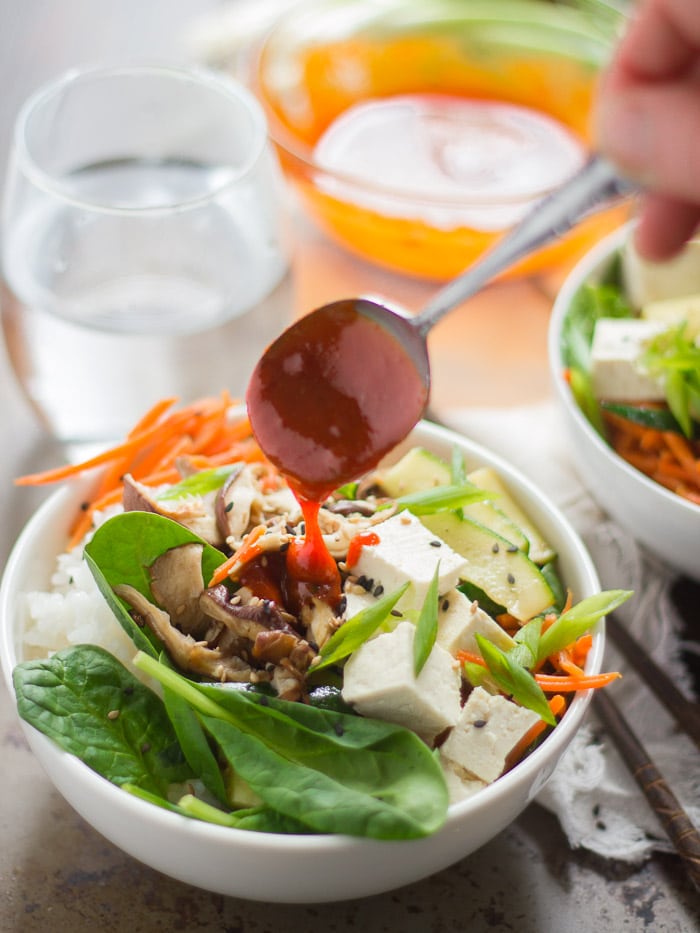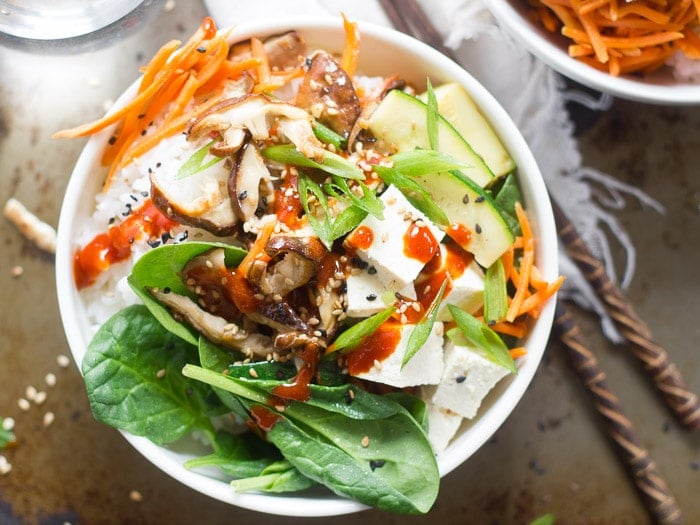This is a favorite that I forget often about. For a while I was under the mistaken impression that this dish wasn’t doable at home, and since I don’t live within convenient distance of any Korean places, I kind of let bibimbap fall off my radar. What a shame. Whenever I get a craving for Korean food my mind first goes to dishes like kimchi stew or vegan bulgogi. If you don’t live near any Korean restaurants, you may not even know what I’m talking about, but trust me, you want to know. Bibimbap is a seemingly simple Korean rice bowl that’s typically made up of rice topped with veggies, and in traditional versions, meat and a fried egg. I’m told that tofu is totally not traditional, but my old favorite Korean restaurant made it for me that way and it was delicious, so that’s how I make my vegan bibimbap now. The secret is in the sauce. Bibimbap sauce is some of the most insanely flavorful stuff I’ve ever tasted. Now that I have my own recipe (which is pretty darn easy to make), I might just put it on everything. Gochujang is the key. This fermented Korean red pepper paste has a deliciously distinctive tang. You can actually get it at lots of regular old supermarkets these days. If yours does’t carry it though, try an Asian market or online. Once I started eating the bibimbap I prepared for this post, all dressed in bibimbap sauce, I realized I had a big problem with my photos. Not that a bowl of veggies and tofu with some sauce on the side isn’t great, but you don’t get anything near an adequate idea of how freaking delicious bibimbap is until you see the rice and veggies coated in red peppery goodness and stirred up into a big rice bowl mess. Of course, this dawned on my while I was eating my bibimbap, and at that point I sure wasn’t stopping for a photo op’. Apologies. <— Since writing that I went and updated the post with snazzy new photos of my sauced-up bowls. See? Delicious! Another awesome, but by no means necessary, part of many a killer bibimbap, is the stone bowl it’s served in, known as a dolsot. This is what held me back for a while from making my own bibimbap. I thought I absolutely needed the bowl. Now that I have the bowl and started making bibimbap, I know that was pretty silly of me. Don’t get me wrong, the bowl is amazing. You heat it up before filling it, so the rice forms a crispy crust everywhere it contacts the bowl, and your food stays sizzling hot through your entire meal. I’ve included steps in the recipe for how to make dolsot bibimbap if you’ve got a bowl, but you can ignore them if you don’t have a bowl. I love the crispy rice crust that the bowl creates, but I will no doubt be making this on lazier days and skipping the bowl heating step.




